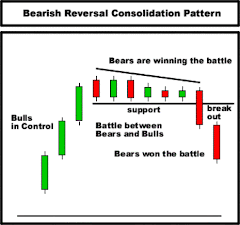Introduction
Hedge funds are always in the media, and frequently regarded as secretive and esoteric.
This is largely due to a a lack of detailed specific information regarding what hedge funds actually do. To help combat this, I have decided to write a short series of articles describing how long/short equity strategies may be defined.
Long/short equity hedge funds generally go long certain shares. And short others. Some may maintain a market neutral position. This means that for every million pounds of stock that they hold, they'll short a million pounds of another stock. Others may have a long bias. For example, maintaining a 70% long, 30% short portfolio.
The portfolio selection processes can be discretionary or systematic. In this opening article, I shall describe the basic pricing process, and move on to technical selection processes at a later date.
Pricing Products
In order to compare stocks, the prices need to be normalised to enable a like for like comparison. For example, if stock XYZ goes up by 10% and stock ABC goes up by 10%, then we'd probably want a market neutral spread between the two to remain static.
This is commonly done by dividing prices by a "base price", where the base price is normally a recent historical price of the associated stock.
For example, if XYZ closed at 232 last night, we could set the base price to be 232. Assume XYZ opens at 250 the next morning. The rebased price would be 250/232 = 1.07759.
It is clear that this represents an overnight increase of 7.759%.
Now assume that ABC has moved from 450 to 459. Using 450 as the base price, the new rebased price would be 1.02.
The spread between XYZ and ABC is therefore:
1.07759 - 1.02 = 0.05759
ie. The spread has moved 5%.
So a trader who'd been long the spread over night, holding a market neutral position, would have made a 5% return on the nominal value of his position.
This concept can be expanded to baskets of shares. For example, if a trader wanted to trade a market neutral position of XYZ against a 50/50 weighted basket of ABC and DEF, the rebased spread would be:
n(XYZ) - 0.5 * n(ABC) - 0.5 * n(DEF)
where
n(X) = (Price of X) / (Base price of X)
In essense, these simple pricing methodologies are used to define new synthetic tradable products. Unlike normal shares, they do not follow lognormal random walks, and do not have an upwards drift. However, some traders and hedge fund managers believe that they possess inefficiencies that can be exploited.
Some of these inefficiencies will be investigated in later articles.
Jon C is an Internet Entrepreneur and Trader. If you have any questions regarding this article, please contact him via the comments for on
http://www.dawjee.com
Article Source: http://EzineArticles.com/?expert=Jon_C
| Free Technical Analysis Tutorial |
| Hot Stock Picks |
| Stock Market Tips |



Hedge Fund Methodologies - How To Price Spreads And Baskets
Subscribe to:
Post Comments (Atom)





No comments:
Post a Comment